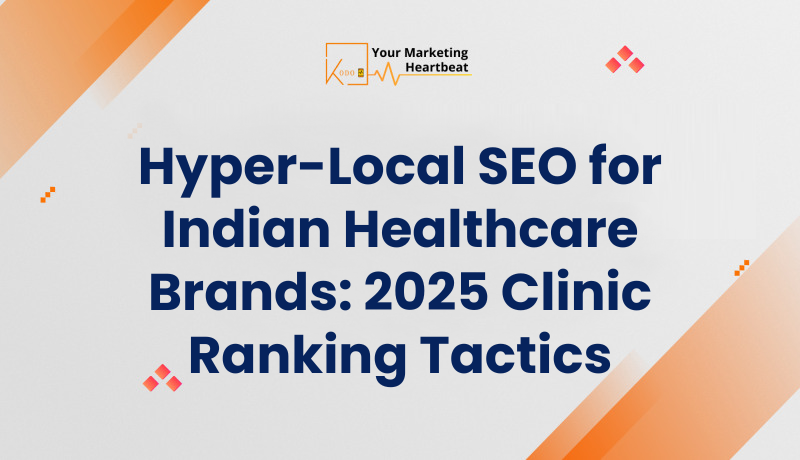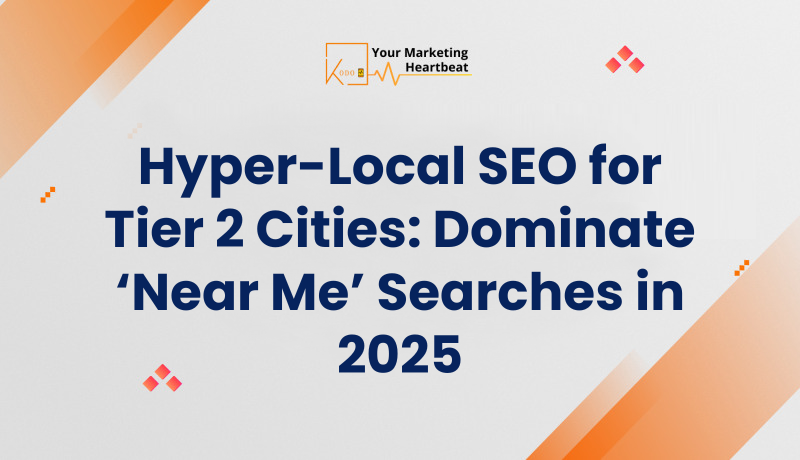
Hyper-Local SEO for Indian Healthcare Brands: 2025 Clinic Ranking Tactics
In the rapidly evolving digital landscape of 2025, healthcare providers in India must adapt to the increasing importance of hyper-local SEO. As patients increasingly turn to online searches to find medical services nearby, optimizing for local visibility is no longer optional—it’s essential. This article delves into effective strategies that healthcare brands can implement to enhance their local search rankings and attract more patients.
Understanding Hyper-Local SEO
Hyper-local SEO focuses on optimizing a business’s online presence to attract customers from specific geographic areas. For healthcare providers, this means ensuring that when potential patients search for services like “dentist near me” or “pediatrician in [city name],” your clinic appears prominently in the search results.
The Importance of Local Search
Statistics reveal that over 80% of patients use online resources to find healthcare providers. This trend underscores the necessity for clinics to invest in hyper-local SEO strategies. By optimizing their online presence, healthcare providers can significantly increase their visibility, leading to more patient inquiries and appointments.
Key Components of Hyper-Local SEO
- Google My Business (GMB) Optimization: Claiming and optimizing your GMB listing is crucial. Ensure that your clinic’s name, address, phone number, and operating hours are accurate and up-to-date. Regularly post updates and high-quality images to engage potential patients.
- Local Keywords: Incorporate location-specific keywords into your website content. This includes using terms that potential patients are likely to search for, such as “best cardiologist in Mumbai” or “affordable physiotherapy in Bangalore.”
- Online Reviews: Encourage satisfied patients to leave positive reviews on platforms like Google and JustDial. Responding to reviews—both positive and negative—demonstrates your commitment to patient satisfaction and can enhance your clinic’s reputation.
Strategies for Effective Hyper-Local SEO
1. Optimize Your Google My Business Profile
Your GMB profile serves as the first point of contact for many potential patients. To optimize it effectively:
- Complete All Information: Ensure that your clinic’s name, address, phone number, and website URL are accurate.
- Add Photos: Include images of your clinic, staff, and services to create a welcoming impression.
- Post Regular Updates: Share news, offers, and events to keep your audience engaged.
2. Conduct Local Keyword Research
Understanding what your potential patients are searching for is vital. Use tools like Google Keyword Planner to identify local keywords relevant to your services. Incorporate these keywords naturally into your website’s content, including:
- Page Titles and Meta Descriptions: Ensure these elements contain local keywords to improve search visibility.
- Blog Posts: Create informative content that addresses common health concerns in your area, using local keywords.
3. Create Location-Specific Landing Pages
If your clinic serves multiple locations, consider creating dedicated landing pages for each area. This approach allows you to tailor content to specific communities, improving relevance and search rankings. For example:
- Landing Page Examples:
- “Pediatric Services in Delhi”
- “Emergency Care in Chennai”
4. Build Local Citations
Consistency in your clinic’s name, address, and phone number (NAP) across various online directories is crucial. Ensure that your clinic is listed on popular platforms such as JustDial, Sulekha, and Practo. This not only boosts your local SEO but also enhances your credibility.
5. Leverage Online Reviews
Online reviews are a powerful tool for building trust and improving local rankings. Encourage your patients to leave feedback on your GMB profile and other review sites. Consider implementing:
- Automated Review Requests: Send follow-up emails or SMS messages after appointments, asking patients to share their experiences.
- Video Testimonials: Showcase satisfied patients sharing their stories on your website and social media.
Measuring the Success of Your Hyper-Local SEO Efforts
To determine the effectiveness of your hyper-local SEO strategies, focus on key performance indicators (KPIs) such as:
- Online Visibility: Track your clinic’s rankings for targeted local keywords using tools like Google Search Console.
- Website Traffic: Analyze visitor behavior on your site using Google Analytics to understand how users interact with your content.
- Conversion Rates: Monitor how many website visitors convert into appointments, using call tracking and scheduling software.
Future Trends in Hyper-Local SEO for Healthcare Providers
As we move further into 2025, several trends are shaping the future of hyper-local SEO for healthcare providers:
1. Voice Search Optimization
With the rise of voice-activated devices, optimizing for voice search is becoming increasingly important. Patients are likely to use conversational phrases when searching for healthcare services. For instance, instead of typing “best dentist,” they might say, “find a dentist near me who accepts new patients.” Adapting your content to reflect this shift can enhance your visibility.
2. AI and Chatbots
Artificial intelligence is transforming how healthcare providers interact with patients. Implementing AI-driven chatbots on your website can help answer common queries, schedule appointments, and provide personalized recommendations. This not only improves user experience but also keeps potential patients engaged.
3. Video Content
Video marketing is gaining traction as a means to connect with patients. Creating informative videos that address common health concerns or showcase your clinic’s services can enhance engagement and build trust. Consider sharing these videos on your website and social media platforms.
Common Mistakes to Avoid in Hyper-Local SEO
While implementing hyper-local SEO strategies, be mindful of common pitfalls that can hinder your efforts:
- Inconsistent NAP Information: Ensure that your clinic’s name, address, and phone number are consistent across all online platforms.
- Ignoring Online Reviews: Failing to respond to reviews can damage your reputation. Engage with patients by acknowledging their feedback.
- Keyword Stuffing: Avoid overloading your content with keywords. Focus on creating natural, informative content that resonates with your audience.
Conclusion
In the competitive landscape of healthcare in India, hyper-local SEO is a vital component for attracting and retaining patients. By optimizing your online presence, leveraging local keywords, and engaging with your community, your clinic can enhance its visibility and ultimately improve patient care. As we embrace the digital age, staying ahead of the curve with effective hyper-local SEO strategies will be key to your clinic’s success in 2025 and beyond.
By implementing these tactics, healthcare providers can ensure they are not only found by local patients but also trusted as reliable sources of care. Start optimizing today and watch your clinic thrive in the digital landscape!


